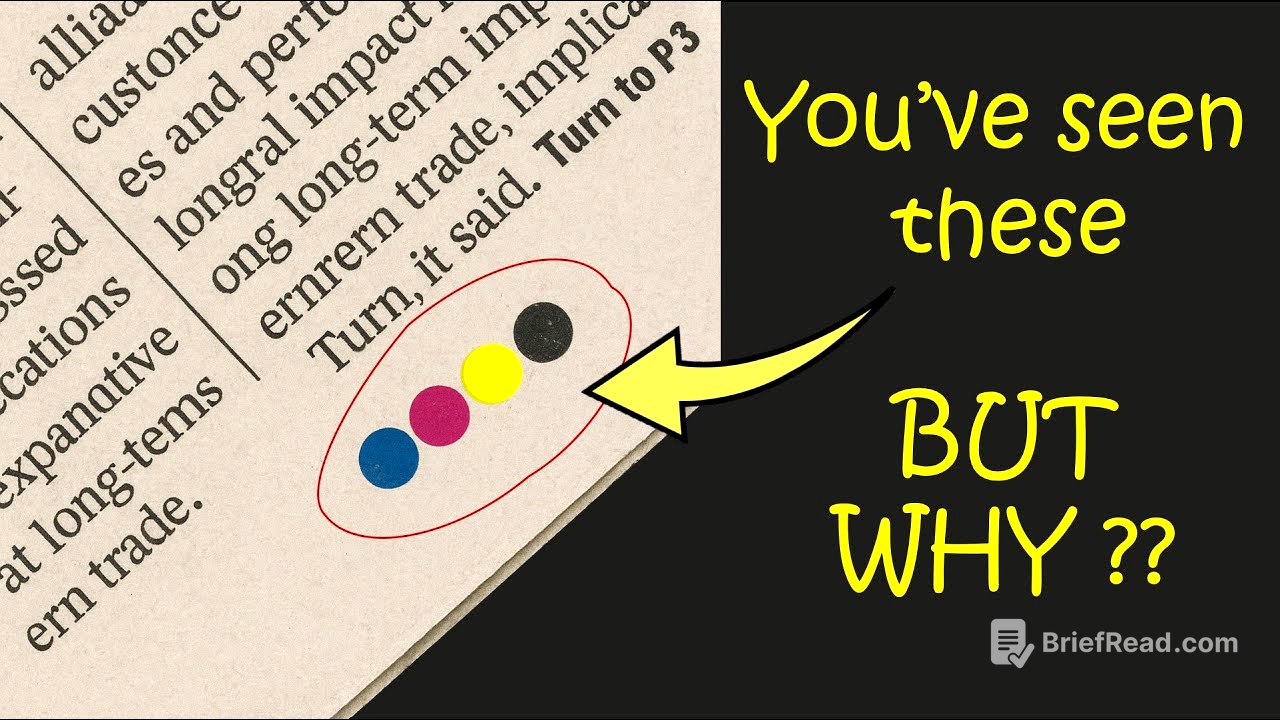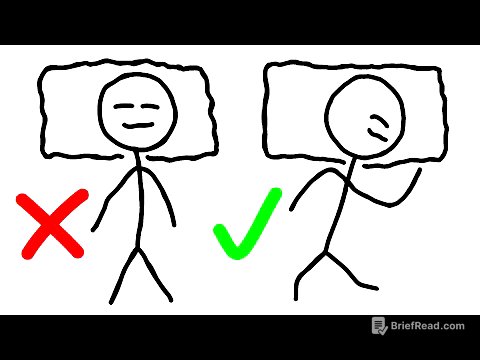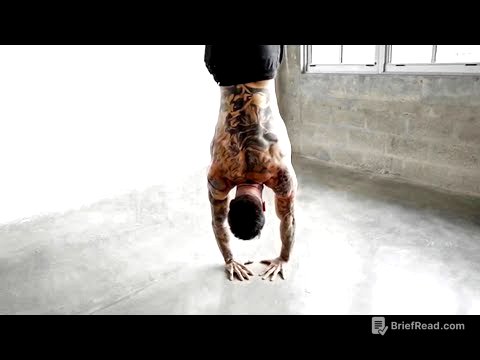TLDR;
This video explores the hidden logic behind everyday designs and patterns that often go unnoticed. It covers ten different examples, explaining the reasons behind their specific features, ranging from colored lines on toothpaste tubes to the gap under public bathroom doors. The explanations reveal practical and sometimes historical reasons for these designs, highlighting how they serve specific purposes related to manufacturing, safety, convenience, and even psychology.
- Colored lines on toothpaste tubes are "eye marks" used by machines for cutting and sealing.
- CMYK dots on newspapers are registration marks for aligning color plates.
- "Ambulance" is written in reverse for correct reflection in mirrors.
- Black dots (frits) on windshields manage thermal expansion and protect adhesive.
- Checkerboard racing flags offer high visibility at high speeds.
- An arrow near a car's fuel gauge indicates the fuel filler side.
- Mirrors in elevators reduce claustrophobia and aid wheelchair users.
- Octagonal stop signs are easily recognizable, even when partially obscured.
- Ridges on coins were originally to prevent coin clipping.
- Gaps under bathroom doors facilitate cleaning, ventilation, and emergency access.
Colored Lines on Toothpaste Tubes [0:21]
The colored lines on toothpaste tubes, often rumored to indicate the ingredients as natural or chemical, are actually "eye marks." These marks are used by automated machines to precisely cut, fold, and seal the tubes during manufacturing. The color of the mark is selected based on which color provides the best contrast for the machine's sensors to easily and accurately detect the mark, even at high speeds.
Four Color Dots on Newspaper Corners [1:04]
The four colored dots (cyan, magenta, yellow, and black - CMYK) found on newspaper corners are registration marks. In large printing machines, content is printed using four separate color plates. These dots serve as guidelines, ensuring that each color layer aligns perfectly to create a clear and sharp final image. Misalignment of these plates can result in blurry images and text, so the registration marks help machine operators and sensors detect and correct any misalignment before mass printing.
Reversed "Ambulance" Text [2:08]
The word "ambulance" is written in reverse on the front of the vehicle so that it appears correctly when viewed through a car's rear or side view mirror. This allows drivers to quickly recognize the vehicle as an ambulance and yield to it, which is critical in emergency situations.
Black Dots Around Car Windshields (Frits) [2:41]
The black dots, known as frits, around the edges of car windshields serve a crucial purpose related to thermal management. During manufacturing, the windshield is fitted into the car's metal frame using a special adhesive. Since metal absorbs heat at a higher rate than glass, the metal frame expands more than the glass, creating a thermal differential that can cause the glass to break. The frits, consisting of a black band and dots, create a gradual transition in heat absorption between the metal frame and the glass, reducing the risk of breakage. The frit band also protects the adhesive from UV light, extending its lifespan and maintaining a strong bond.
Checkerboard Pattern on Racing Flags [4:46]
The black and white checkerboard pattern on racing flags is a product of visual logic. Its high contrast makes it easily visible against any background, even at high speeds. This ensures that drivers can clearly see the flag indicating the finish line.
Arrow Near Fuel Gauge in Car [5:04]
The arrow located near the fuel gauge in a car indicates which side of the vehicle the fuel filler is on. This helps drivers quickly determine which side to position the car on when stopping at a fuel station, making it easier to reach the fuel tank without excessively stretching the hose. This is particularly useful when driving an unfamiliar car.
Mirrors Inside Elevators [5:41]
Mirrors in elevators serve both psychological and practical purposes. They help reduce claustrophobia by creating an illusion of a larger space, which can alleviate anxiety for those who fear enclosed spaces. Additionally, mirrors assist wheelchair users and their attendants by providing visibility when backing out of the elevator.
Octagonal Shape of Stop Signs [6:28]
Stop signs are octagonal to make them instantly recognizable, even if partially covered or viewed from the back. No other traffic sign uses this shape, so drivers immediately know to stop upon seeing an eight-sided sign, even before they can read the word "stop." This unique shape is a crucial safety feature.
Ridges on Coin Edges [7:05]
The ridges on the edges of coins were originally introduced to prevent coin clipping, a practice where people would shave off small amounts of precious metals from the edges of coins. The ridges made such tampering immediately noticeable. While they may also help the visually impaired identify coins today, their primary purpose is historical.
Gap Under Public Bathroom Doors [7:42]
The large gap under public bathroom doors is intentional and serves several practical purposes. It allows for easier and faster cleaning, improves air circulation to reduce odors, provides emergency access in case someone needs help, and indicates occupancy to others waiting. The gap also helps people feel less isolated by allowing them to sense movement outside the stall.









